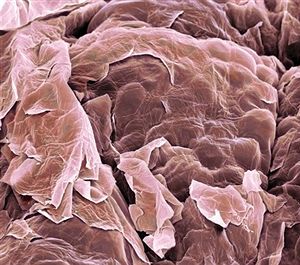One of the rarest forms of breast cancer is metaplastic breast cancer which, when it forms, begins as one type of cell and then changes into another type. This is an invasive ductal cancer that forms usually in the milk ducts and then moves to other breast tissue.
Why is it called metaplastic breast cancer?
Metaplastic is a term used to denote change in form. This is a different term than metastatic, which means to move from one to another place. So whereas metaplastic refers to something that changes form, metastatic refers to something that changes locations (migrates from one to another part of the body).
 Most cases of this type of breast cancer start in the epithelial cells which then transform into non-glandular or squamous cells.
Most cases of this type of breast cancer start in the epithelial cells which then transform into non-glandular or squamous cells.
Metaplastic breast cancer is also referred to as metaplastic breast carcinoma and relatively less is known about the treatment and long term prognosis of this rare type of tumor.
It generally describes a dangerous form of cancer which, when diagnosed is already of an invasive nature and has already spread to tissue other than where it originated.
Diagnosis of metaplastic cancer of the breast
The usual diagnositic tools that are used for diagnosing other types of breast cancer are also used here: mammograms, ultrasound scans, MRI, CAT scan or a PET scan or a combination of several of these will be used to locate and find out more about the tumor. A definitive diagnosis will require a breast biopsy for closer examination.
Treatment for metaplastic breast cancer
The treatment of this type of cancer will depend upon a woman’s overall age and health, on the size of the tumor, how much it has spread and various other parameters that are used to determine the stage of the disease.
After taking into account all of these facts, the oncologist will devise the best methods of treatment which may include any and all of the following
Lumpectomy – Here only the tumor or lump and as much as possible of the healthy breast tissue is conserved. This is possible with smaller tumors.
Mastectomy– Large or multiple tumors or cancer that has spread to more of the breast tissue may require a mastectomy or removal of the entire breast. This may also be required among women with certain genetic mutations and a strong family history of the disease.
Radiation – This follows surgical removal of the tumor to make sure that all the cancer cells are destroyed, even those left behind after surgical removal of the tumor.
Other therapies such as adjuvant and neo-adjuvant chemotherapy, hormonal therapy and biologic targeted therapy may be used considering the individual characteristics of the cancer.
Other things to consider about treatment for metaplastic breast cancer
Since this is a rarer form of tumor, the standard treatment protocols are not as well defined and laid down as treatments for certain breast cancers. Also this kind of cancer is generally detected at an invasive stage and has poorer prognosis and survival rate than many other kinds of breast cancer.






